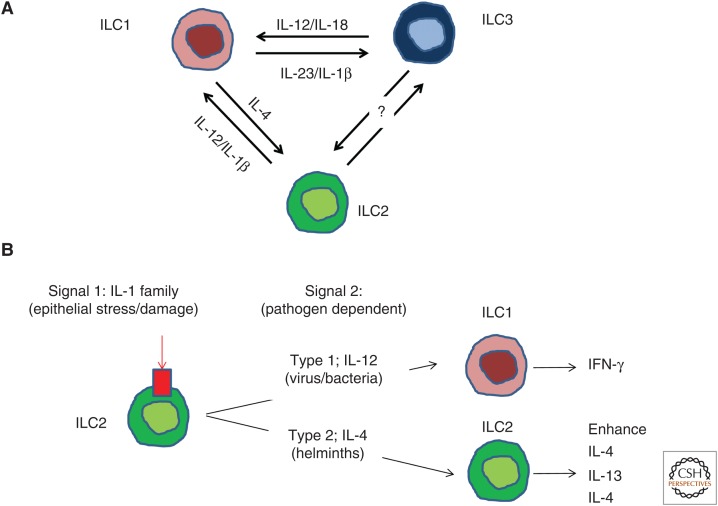Figure 3.
Innate lymphoid cell (ILC) plasticity is governed by the cytokine milieu. ILCs can switch between fully polarized subsets to rapidly adapt to changes occurring in their environment. (A) Interleukin (IL)-12 and IL-18 drives the transdifferentiation of ILC3s into ILC1s. This process is reversible because ILC1s convert to ILC3s in the presence of IL-23 and IL-1β. ILC2s undergo cell plasticity in the presence of IL-1β and IL-12 to convert into interferon (IFN)-γ-secreting ILC1s. IL-4 can revert this transdifferentiation process and convert ILC1s into ILC2s. (B) Double hit model of ILC2s plasticity. ILC2s require of two types of signals to undergo transdifferentiation. Signal 1, secreted by epithelial cells on stress or damage conditions, is induced by IL-1 family members and trigger modifications in the chromatin architecture. DNA reprogramming will be orchestrated by the signal 2 or “driving cytokines.” IL-12 drives ILC2s plasticity toward ILC1s to better cope with intracellular bacteria or virus, whereas IL-4 enhances type 2 immune responses against helminths.

